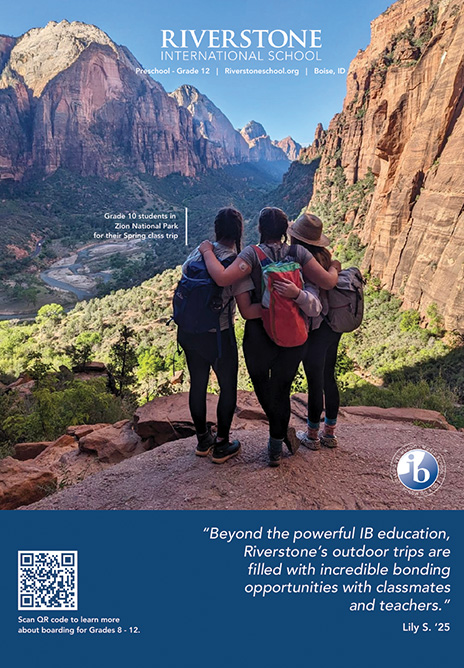The End of CSO: Don’t Let Stabilization Expertise Go
Speaking Out
BY JOHN H. MONGAN
A persistent and repeated error through the ages has been the failure to understand that the preservation of peace requires active effort, planning, the expenditure of resources, and sacrifice, just as war does.
—Donald Kagan, On the Origins of War, 1996
The Trump administration’s decision to disband the State Department’s Bureau of Conflict and Stabilization Operations (CSO)—like its more publicized dismantling of USAID—represents a belief that the U.S. can choose how it wants to engage abroad. Of course, the idea that the U.S. can choose how it engages abroad is the exact thought that motivated presidential candidate George W. Bush when he said in 2000 that the U.S. “shouldn’t be in the business of nation-building.”
Four years later, after 9/11, Afghanistan, and Iraq, it was President Bush who created CSO’s predecessor, the Coordinator for Reconstruction and Stabilization (S/CRS), and it was Bush who signed legislation institutionalizing it in 2008. As of the time of this writing, that statutory “coordinator” appears to be vested in the Bureau of Population, Refugees, and Migration (PRM) that will coordinate disaster response efforts.
S/CRS was created to memorialize and operationalize the lessons of the major stabilization missions of the 1990s and 2000s—Bosnia, Kosovo, Afghanistan, and Iraq, among others. It evolved into CSO under President Barack Obama to “anticipate, prevent, and respond” to conflict risks and became the centerpiece of implementing the Global Fragility (GFA) and Elie Wiesel Genocide and Atrocity Prevention Acts of President Donald Trump’s first term. It will be interesting to see whether the department is able to implement those acts without the bureau.
It is reasonable to expect that some conflict-related contingency will arise in the next decade, and the department will be no better prepared to respond than when it became necessary to establish a new mission in Pristina in 1999; provincial reconstruction teams in Afghanistan in 2002; effective governance in Iraq in 2003; or the GFA’s small-scale, conflict-focused interventions in different countries today.
Whatever one thinks of CSO, it was the only element of the State Department specifically tasked to think through these challenges, and its absence re-creates a capability gap likely to haunt the department in the years ahead. Ironically, it would have been an organization well suited to plan for the takeover of Greenland, Gaza, or the Panama Canal, or the reestablishment of a presence in Damascus—all initiatives this administration has proposed.
Without relitigating the decision to abolish the bureau, it is incumbent on department leadership to consider how to maintain some degree of conflict capacity for the time when political leadership suddenly cares about a conflict challenge somewhere.
The Secret Sauce
All bureaucracies have good intentions that can lead to pernicious side effects. Professionalism leads to apolitical expertise but risks the moral cowardice of careerism. Physical fitness is essential for armies in combat but leads to many officers who are better at push-ups than strategy. Patience and judiciousness are essential qualities for diplomacy but can camouflage laziness and indecisiveness.
CSO challenged these diplomatic hazards by asserting that diplomatic responses to conflict require fast and decisive action, much like military responses. CSO developed a range of capabilities during its existence, but three core requirements guided its formation and operations, and remain gaps for the department:
- Expeditionary Operations: puttingthe right civilians in the right place, at the right time, with the right preparation for the job.
- Operational Planning: making sure the people deployed have a feasible and well-understood mission.
- Flexible Funding: making sure the people deployed have the right resources to fulfill the plan.
An Expeditionary Mindset and State’s Culture
Speaking Out is the Journal’s opinion forum, a place for lively discussion of issues affecting the U.S. Foreign Service and American diplomacy. The views expressed are those of the author; their publication here does not imply endorsement by the American Foreign Service Association. Responses are welcome; send them to journal@afsa.org.
When the State Department struggled to establish a diplomatic mission in Kosovo in 1999, I was a new FSO who had recently worked for a humanitarian agency in Kosovo. I was amazed the U.S. government could not manage to do a better job of opening a mission than my old NGO could.
Five years later, I was further astounded to learn the department had no standard plan to prepare me for deployment to an Afghan provincial reconstruction team (PRT), even though the Vietnam Civil Operations and Rural Development Support program (CORDS) was within living memory.
State does not like “expeditionary” operations. Countless Foreign Service officers have taken great risks abroad, but the Service as a whole does not do so systematically, and careerism encourages the department’s leaders to defer to security rather than to the needs of the mission—or rather, bakes security into the main need of the mission, which is paradoxical.
Diplomatic Security, meanwhile, premises its operations on every diplomat being a “principal” who must be protected as a dignitary. Diplomats certainly are not cannon fodder, but they cannot perform their jobs if they are all treated as dignitaries who ought not to take risks overseas.
CSO’s and S/CRS’s best work involved putting diplomats far forward into hazardous places and providing them with extensive—and expensive—training and equipment that, pre-Benghazi, allowed them to do things other State personnel were not permitted to do. Benghazi ended policymakers’ willingness to support such missions, but the department never liked them in the first place. State’s disdain for such challenges will not make them go away, and we cannot pretend State is at its most effective and influential in the places it is not present.
The George W. Bush–era leadership that created S/CRS spoke as if every diplomat needed to be able to serve on a PRT, but such a Foreign Service would be ill-suited to the work on most issues in most countries. For example, skills that make a diplomat successful on a PRT may not help as much when working through trade treaties or child custody disputes.
State needs a cadre of personnel ready for high-threat environments, but a “conflict cone” of FSOs will not do, because larger conflict missions need conflict-ready public diplomacy, consular, management, and other types of FSOs, while conflict-cone officers need “normal” jobs to sustain a career path, not to mention a stable family life.
Long before having a “Ranger Regiment” of elite light infantry, the Army had a “Ranger School” to teach elite tactics to a small group of soldiers who would carry those skills back to their own units. A three- to four-week “Expeditionary Skills” course over and above the Foreign Affairs Counter Threat (FACT) course could prepare 5 to 10 percent of the Foreign Service and select civil servants for tough missions and unexpected contingencies and see to it such officers were distributed evenly around the department. The Navy and Air Force have similar courses for personnel who must be ready for combat even though it is not their job.
These personnel would be trained to protect their own facilities and movements under DS oversight, with regulations and policy adjusted to recognize their missions as different from the Foreign Service’s preferred operating model. Each regional bureau could manage its own “stable” of expeditionary-trained personnel and mobilize them from across the bureau as needed.
The course should be mandatory for assignment to high-threat posts. Regular exercises connected to military exercises could maintain this capability to deploy individuals with the military or larger teams into high-threat environments at short notice.
Operational Planning and Diplomacy
Putting people in harm’s way obligates the department to give them clear and feasible goals so they know when to end the mission or “normalize” it. Operational planning is a core State Department weakness, one that CSO played an outsized role in filling, even in missions where it had no field role and was only an adviser.
DS has an excellent planning process for establishing or securing a hazardous mission, but it is grounded purely in force protection and the logistics requirements that flow from it. For example, when the department instructed DS to establish a mission in one African country several years back, DS examined available facilities and risks and determined the mission would require 50 DS and military personnel to secure, leaving room to accommodate just four “substantive” personnel, including the chief of mission.
This process, however, does not circle back to policy to understand what these few substantive personnel might accomplish that would justify risking many more DS and military personnel, if the hazards really require them. It also does little for existing posts where the challenge is to keep engaged in certain unstable areas within a country without expecting or absorbing much additional logistical support.
The inevitable result is an unwieldy and costly mission unlikely to achieve the hoped-for goals. A better policy-led planning process, combined with trained “expeditionary” diplomats, could promote a relatively secure, yet more effective, diplomatic mission in a high-threat locale.
From 2020 until this year, CSO’s work implementing the GFA involved developing just such a policy-centered planning process for 10 GFA-designated countries, involving data analysis, defined and complementary diplomatic and assistance goals, and reliable indicators of effectiveness. These GFA planning efforts, however, never combined, or even consulted with, nonassistance resource, staffing, and security planning for these posts—a gaping flaw in its implementation.
A planning cell of 20-25 personnel, ideally based in the Office of the Under Secretary for Political Affairs, could combine M, DS, and CSO planning capabilities to support embassies and regional bureaus with the kind of rigorous and integrated planning needed for effective stabilization responses.
Flexible Funding Fills Gaps
A common complaint about CSO among less-imaginative State counterparts was that the bureau was “unpredictable,” often proposing to do things in country X that were totally different from what it was recommending in country Y. Many State personnel preferred dealing with the clear “lanes” of functional bureaus like International Narcotics and Law Enforcement or Population, Refugees, and Migration.
CSO’s unpredictability, however, was its greatest strength. It was a multi-tool, not a screwdriver or wrench, providing smaller and more targeted interventions optimized for the challenge at hand. Capable people put into harm’s way with a sound plan need resources both to support their own logistics and to engage and build capacity with their local partners, many of whom will be people previously unknown to the U.S. government, with needs that can be learned only by meeting them.
Any capacity the department retains for stabilization and expeditionary efforts will depend on some form of flexible funding unconstrained by congressional earmarks or annual funding cycles—not necessarily a large account, but a carefully stewarded and regularly maintained one.
A Learning Organization
Better training and security culture matched with better planning and flexible resources will deliver many of the capabilities embodied in CSO and S/CRS—but not well enough. No one claims that State does not need the Bureau of Consular Affairs because every officer has done a consular tour, or that we do not need the Bureau of Economic and Business Affairs because we have an economics cone.
Unifying conflict capabilities in a single bureau created a virtuous cycle for a learning organization that could iterate and improve better than can be expected from a mishmash of DS training, regional bureau responses led by a seventh-floor planning team, and funds presumably managed by the director of foreign assistance.
But maintaining these disparate capabilities in any form is much better than losing them entirely. Retaining these capabilities in any form creates the hope that, when the next challenge arises, the department will not need to start from zero again, with the waste, dangers, and disappointments caused by our lack of preparedness in the days before CSO.
When sharing or linking to FSJ articles online, which we welcome and encourage, please be sure to cite the magazine (The Foreign Service Journal) and the month and year of publication. Please check the permissions page for further details.
Read More...
- “Americans Support UN Peacekeeping, With Conditions” by Steven Kull and Clay Ramsay, The Foreign Service Journal, December 1998
- “Supporting Civil Society in the Face of Closing Space” by Mariam Afrasiabi and Mardy Shualy, The Foreign Service Journal, May 2018
- “On CSO’s 10-Year Anniversary: Stabilization Operations in Perspective” by Robert J. Faucher and John H. Mongan, The Foreign Service Journal, October 2021




